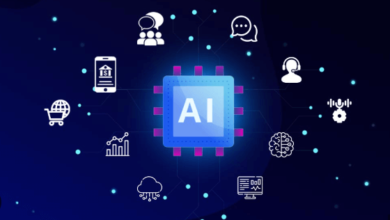Exploring the Pros and Cons of Electric Vehicles

The integration of artificial intelligence in cybersecurity represents a pivotal advancement in the ongoing battle against cyber threats. By employing sophisticated machine learning techniques, organizations can enhance their threat detection capabilities and streamline incident response efforts. However, as the technology continues to evolve, it brings forth a series of challenges that must be addressed, including ethical considerations and the financial implications of implementation. Understanding these dynamics is crucial for organizations aiming to leverage AI effectively. The question remains: how can they navigate the complexities to optimize their cybersecurity frameworks?
AI-Powered Threat Detection
In today’s digital landscape, organizations increasingly rely on AI-powered threat detection systems to identify and mitigate potential cybersecurity threats.
Utilizing machine learning algorithms, these systems enhance anomaly detection capabilities by analyzing vast datasets to recognize unusual patterns indicative of attacks.
This proactive approach not only streamlines threat identification but also empowers organizations to respond swiftly, preserving their operational integrity and safeguarding their digital freedoms.
Predictive Analytics in Cybersecurity
Predictive analytics in cybersecurity leverages sophisticated algorithms and historical data to forecast potential security incidents before they occur.
By employing behavioral analysis and anomaly detection, organizations can identify patterns indicative of threats, enabling proactive measures.
This approach not only mitigates risks but also empowers businesses to maintain operational integrity and safeguard sensitive information, fostering a landscape of resilience against evolving cyber threats.
Challenges of AI Implementation
Numerous organizations face significant challenges when implementing AI in cybersecurity, primarily due to the complexity of integrating advanced technologies into existing systems.
Key obstacles include high implementation costs, skill gaps among personnel, and the need for regulatory compliance.
Additionally, ethical concerns surrounding data privacy further complicate the landscape, necessitating careful consideration of how AI systems are designed and deployed within the cybersecurity framework.
Future Trends in AI Security
Emerging trends in AI security are poised to reshape the cybersecurity landscape significantly over the next decade.
With machine learning advancements enhancing automated incident response, organizations will navigate data privacy concerns more effectively.
However, the rise of adversarial AI techniques necessitates a strong focus on AI ethics and AI-driven compliance frameworks to ensure that security measures uphold individual freedoms while protecting sensitive information.
Conclusion
The integration of artificial intelligence in cybersecurity represents a double-edged sword; while it offers unprecedented advancements in threat detection and response, it simultaneously introduces significant challenges related to implementation and ethics. As organizations navigate this complex landscape, the balance between innovation and responsibility must be carefully maintained. Ultimately, the future of AI in cybersecurity hinges on the ability to harness its potential while safeguarding the very data it seeks to protect, emphasizing the paradox of progress in a digital age.





